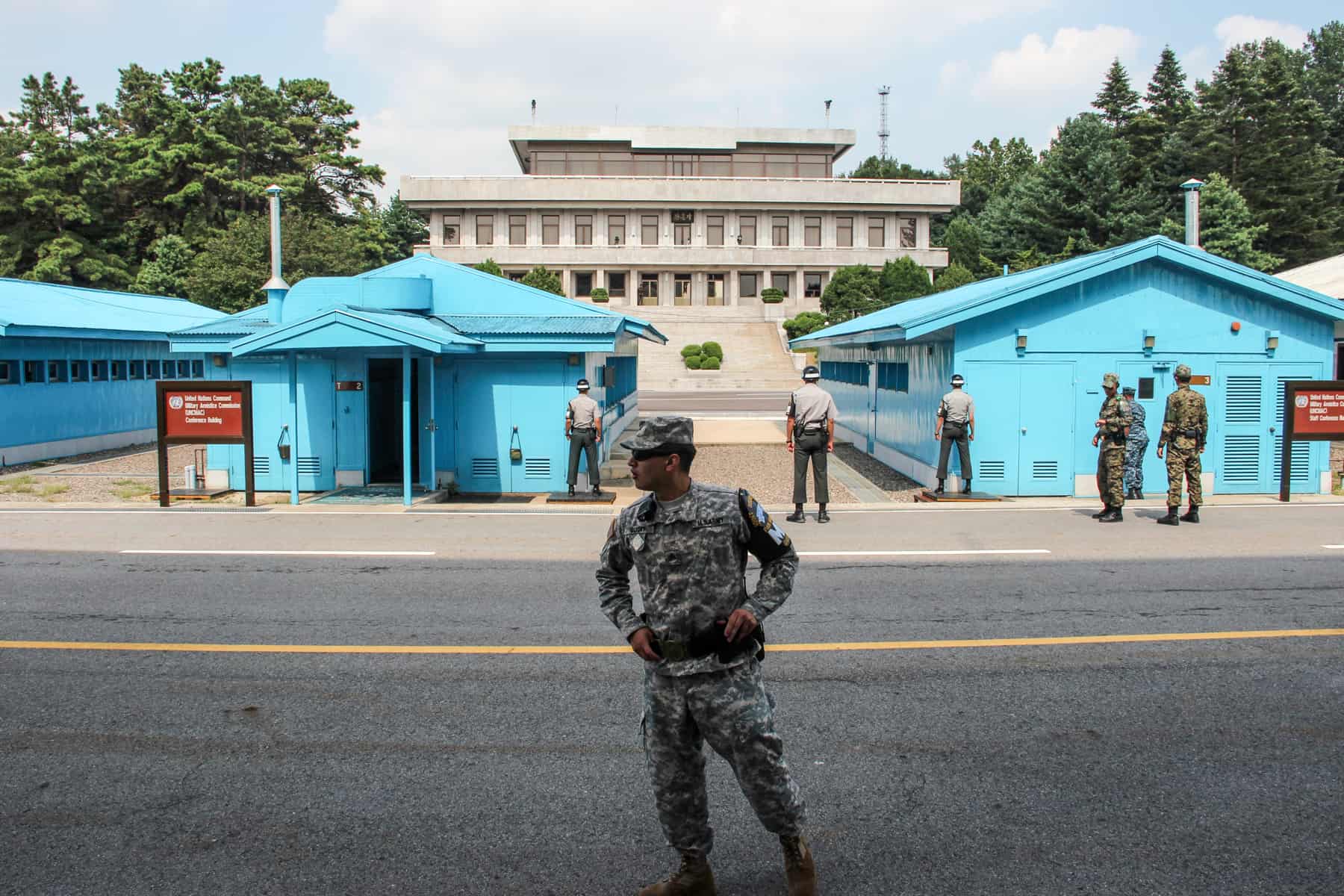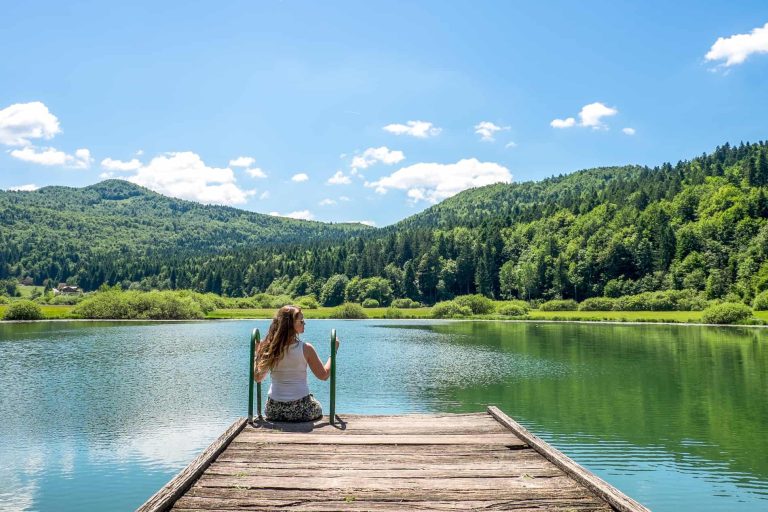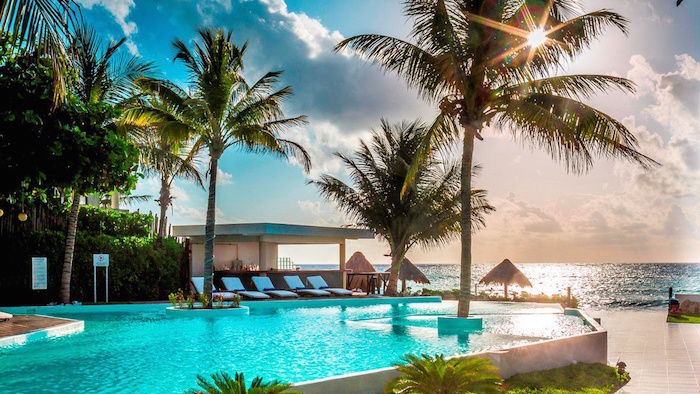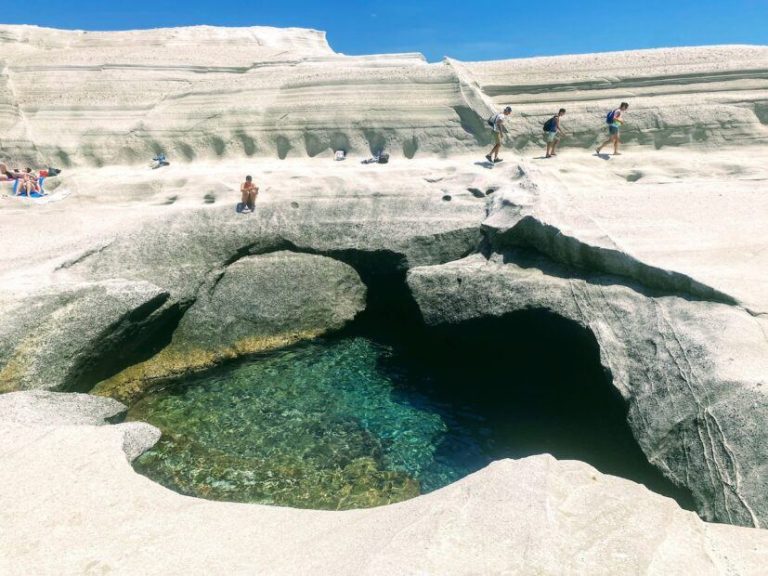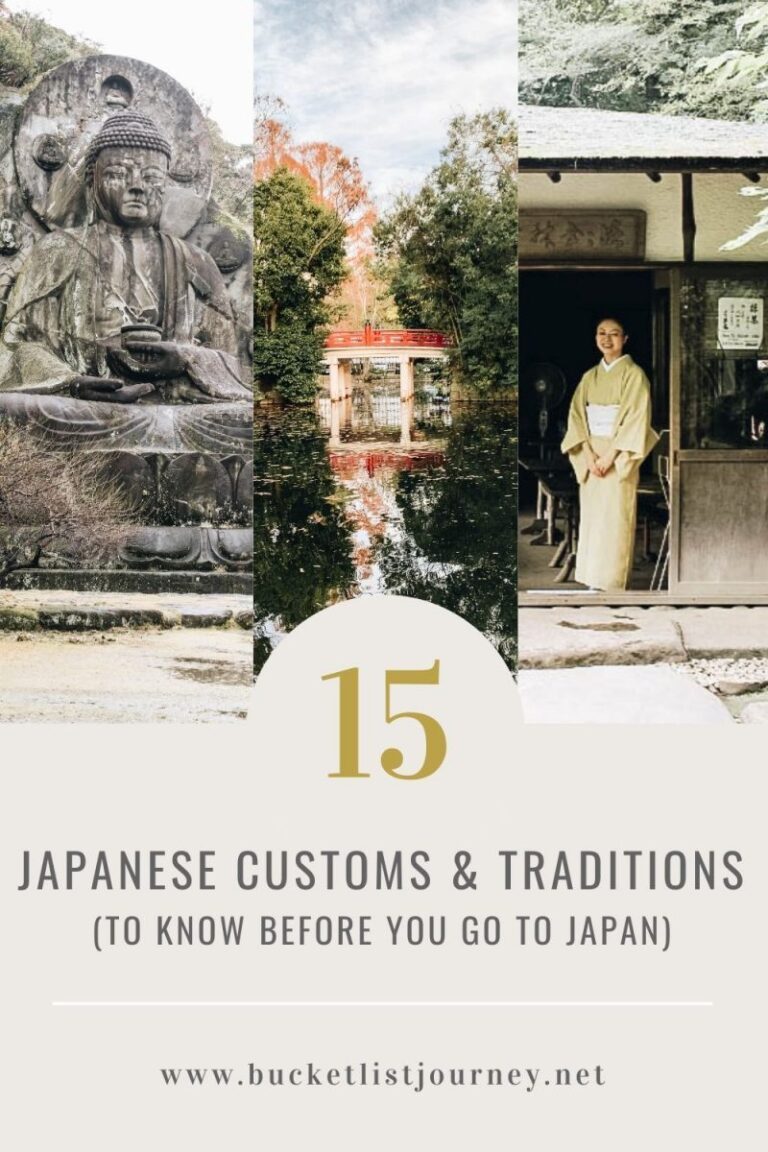In South Korea, DMZ tourism is a big business. Here, you can choose from a multitude of DMZ tours from Seoul, from full-day visits, JSA only tours to hikes and tours with North Korean defectors.
As one South Korean woman said to me: “People have lost the meaning of what the DMZ is and what it’s there for. Like it’s a fun thing to do.” So when you visit the DMZ be sure to remember exactly what it stands for, why it exists and the people who have died protecting the border or trying to escape from it.
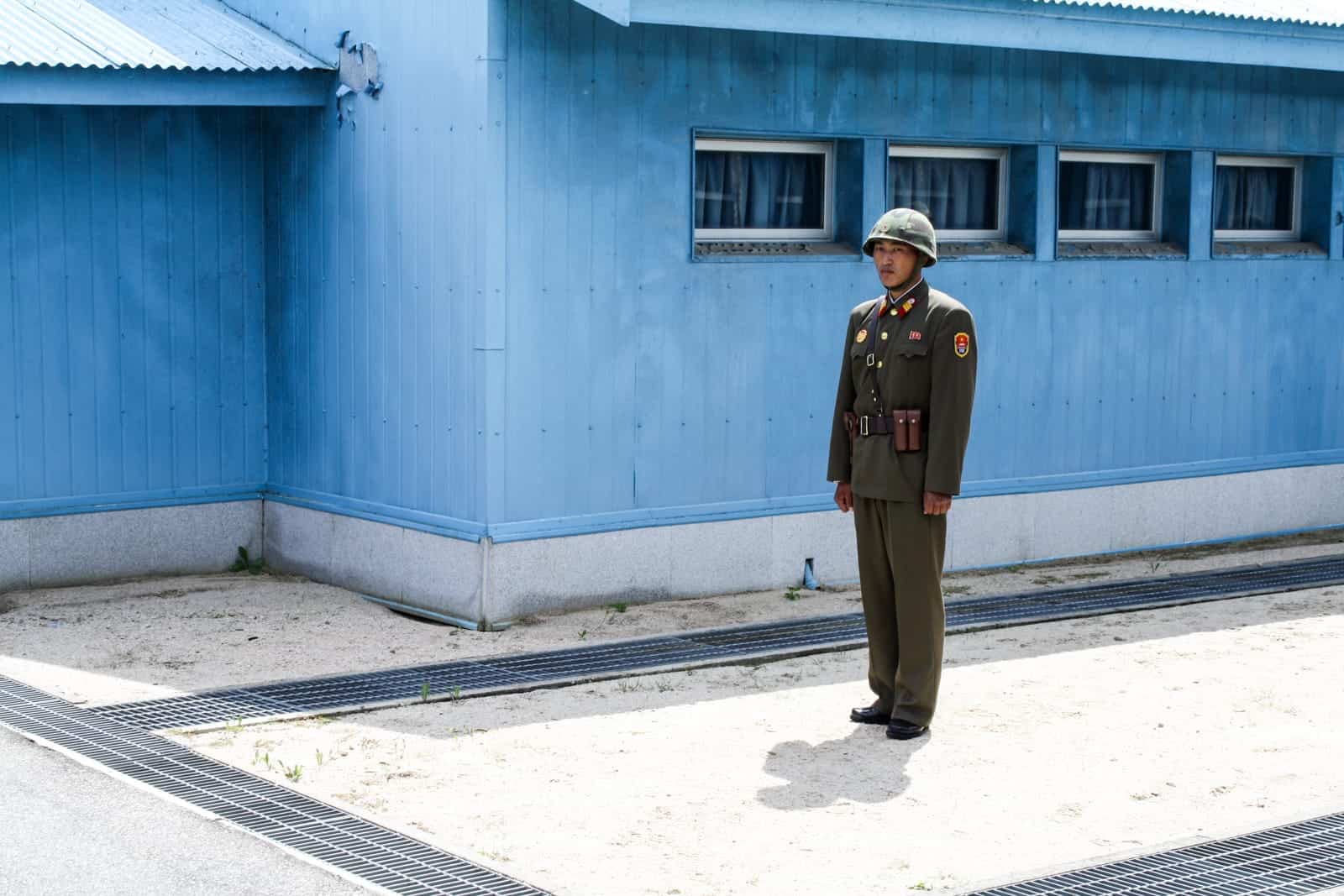
Disclaimer: This post contains affiliate links to handpicked partners, including tours, gear and booking sites. If you click through or buy something via one of them, I may receive a small commission. This is at no extra cost to you and allows this site to keep running.
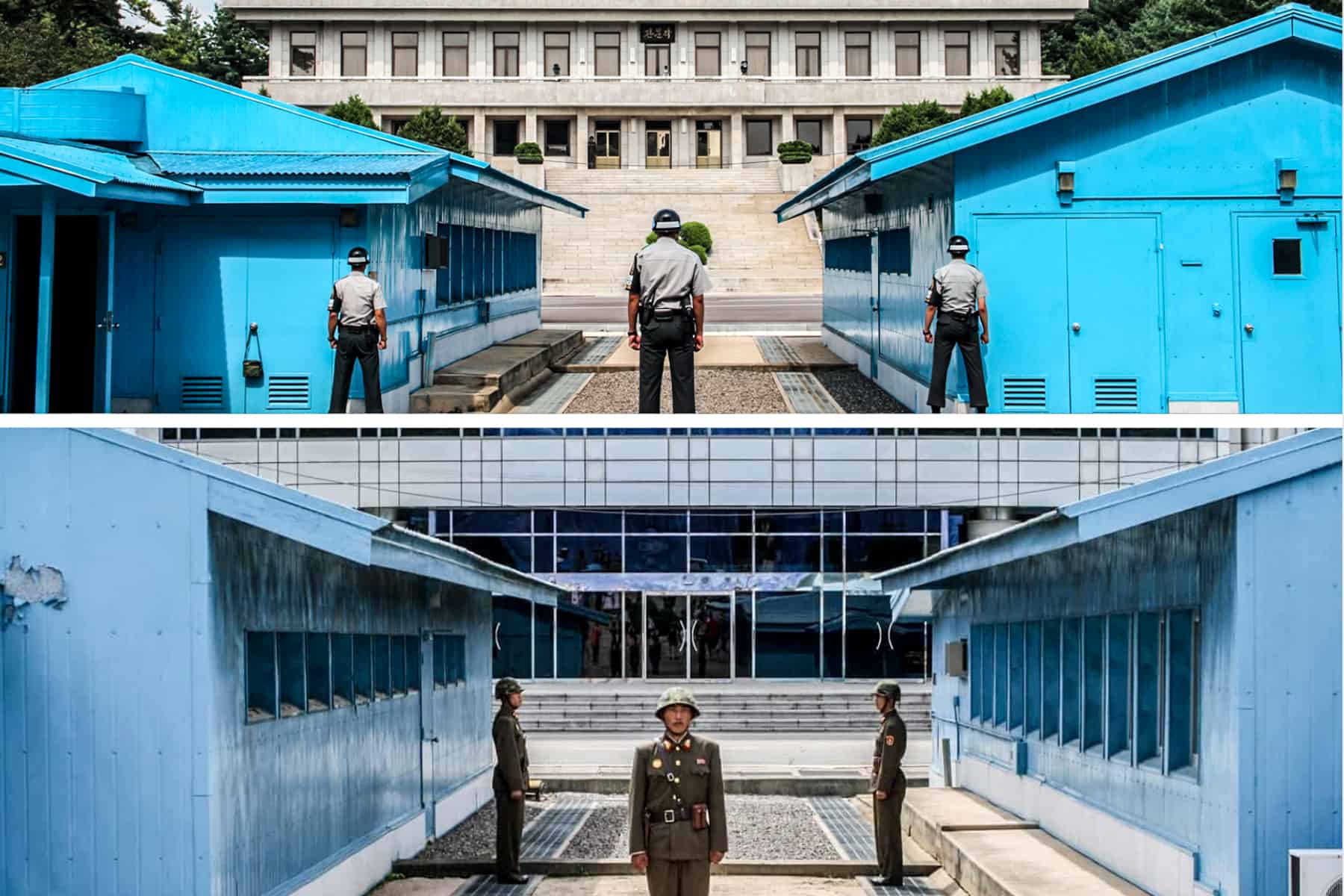
The full-day ‘DMZ and Panmunjeom Tour’ (from 8 am until 5 pm) runs every day (except on Sundays, Mondays, National Holidays, and Military Training Days) and costs 135,000 Korean Won / around 0 US per person. You can read a full overview of the trip here.
What is the DMZ Demilitarized Zone?
Taking us through to the viewing platform, through an imposing, beige building, we all stood on the steps of the building looking out over to the building on the South Korean side. It was surprisingly calm, yet it felt incredibly eerie. No South Korean soldiers were present, just North Korean soldiers keeping guard.
The sites you see on this tour are: Imjingak Park → The Bridge of Freedom → The 3rd Infiltration Tunnel → DMZ Theater & Exhibition Hall → Dora Observatory → Dorasan Station → Pass by Unification Village → ID Check Point → Camp Bonifas → JSA (Freedom House, Conference Room)
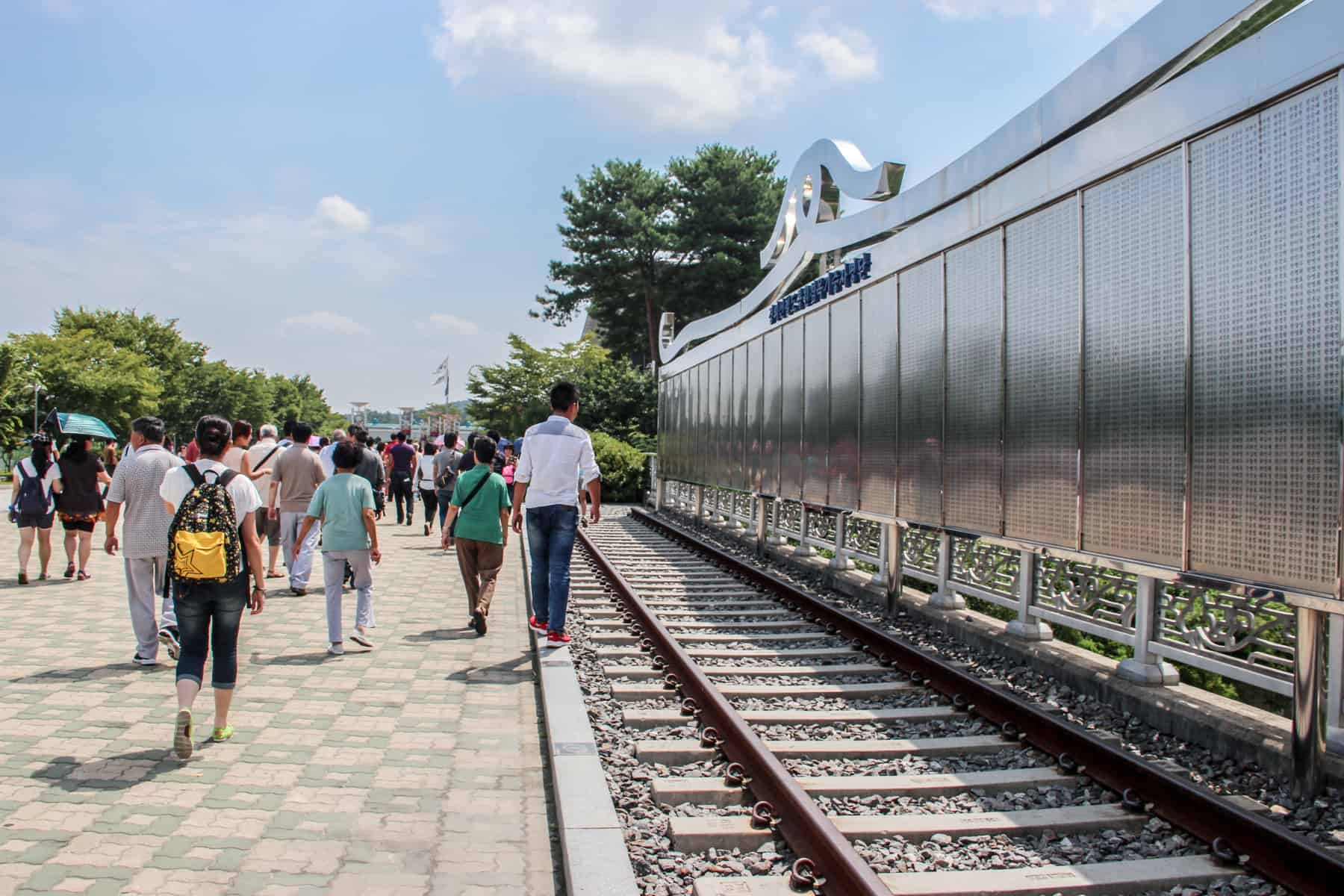

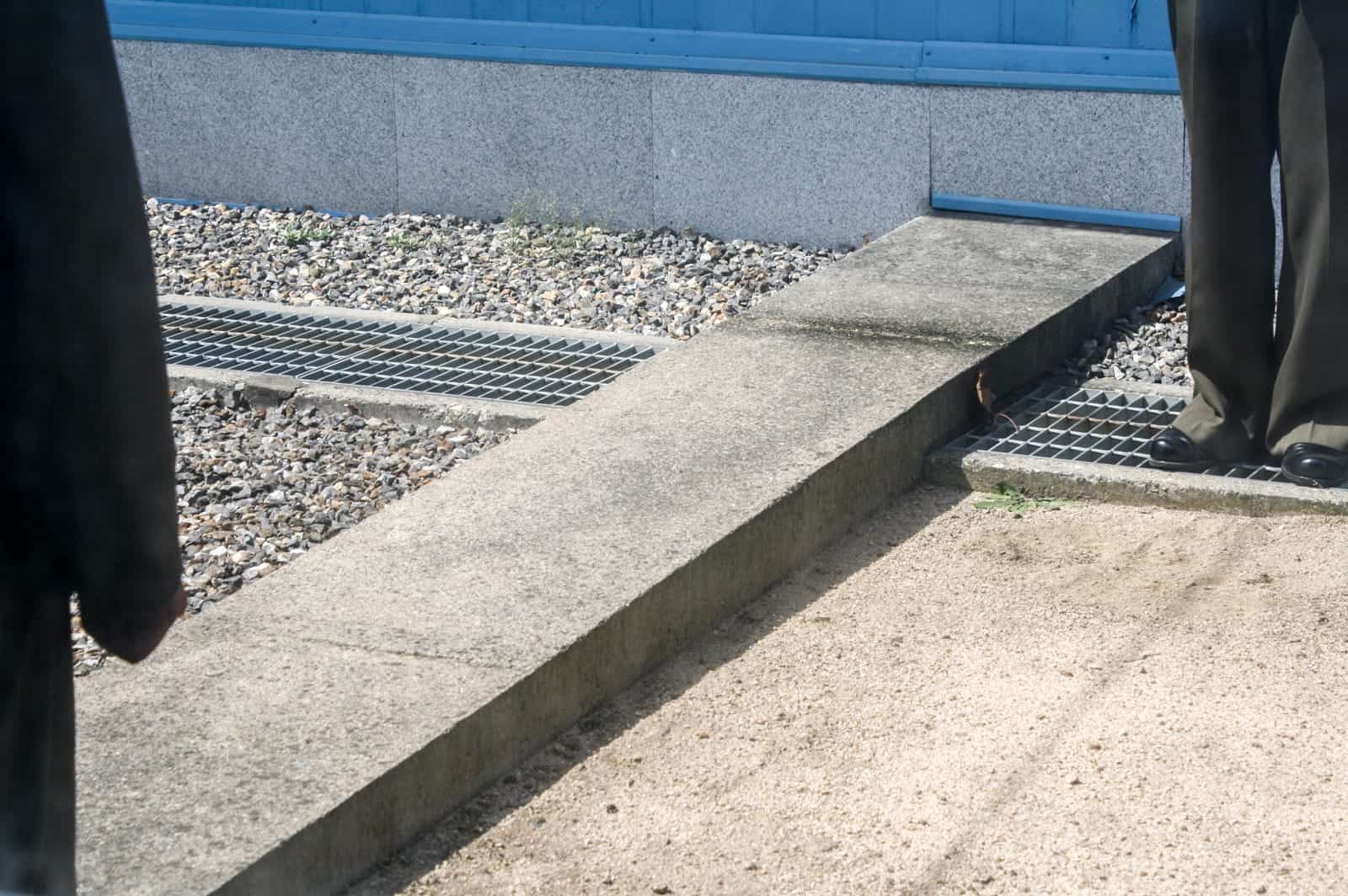
Visiting the DMZ from North Korea was filled with adrenalin and a little fear. Not only were we in the world’s most closed country, but we were also on the world’s most dangerous border between two countries still technically at war.
What Part of the DMZ do I See as a Tourist?
I marvelled at the location of the DMZ thinking about how you can stand in two countries at the same time, compounded by the horror that a divided Korea had such an intimidating, military armed border. Would a trip to the world’s most heavily fortified border, dubbed “the scariest place on Earth” by former US President, Bill Clinton, during his visit in 1993 put a person’s life at risk in case of any outbreaks of gunfire, fighting and attacks?
How to Visit the DMZ in North Korea and South Korea
READ MORE: Travelling in South Korea – A Guide (But Glad I Gave it a Chance)
One North Korean guard stood staunchly guarding the door that leads to the South Korean side of the JSA, his fierce and set expression creating an atmosphere in the room that signalled this as very serious business. It was a day none of us could forget.
The Chinese and North Koreans pulled back 2km north and the UN forces 2km to the south, creating a ‘No Man’s Land’. Tanks, heavy artillery and mines exist on the Northern and Southern Limit Lines that are lined with barbed wire fences, but not within the DMZ itself, as was part of the armistice agreement.

I decided on a full-day tour in order to see a series of historical sites and relics that can help formulate a better picture of the division between North and South Korea and setbacks to reunification.
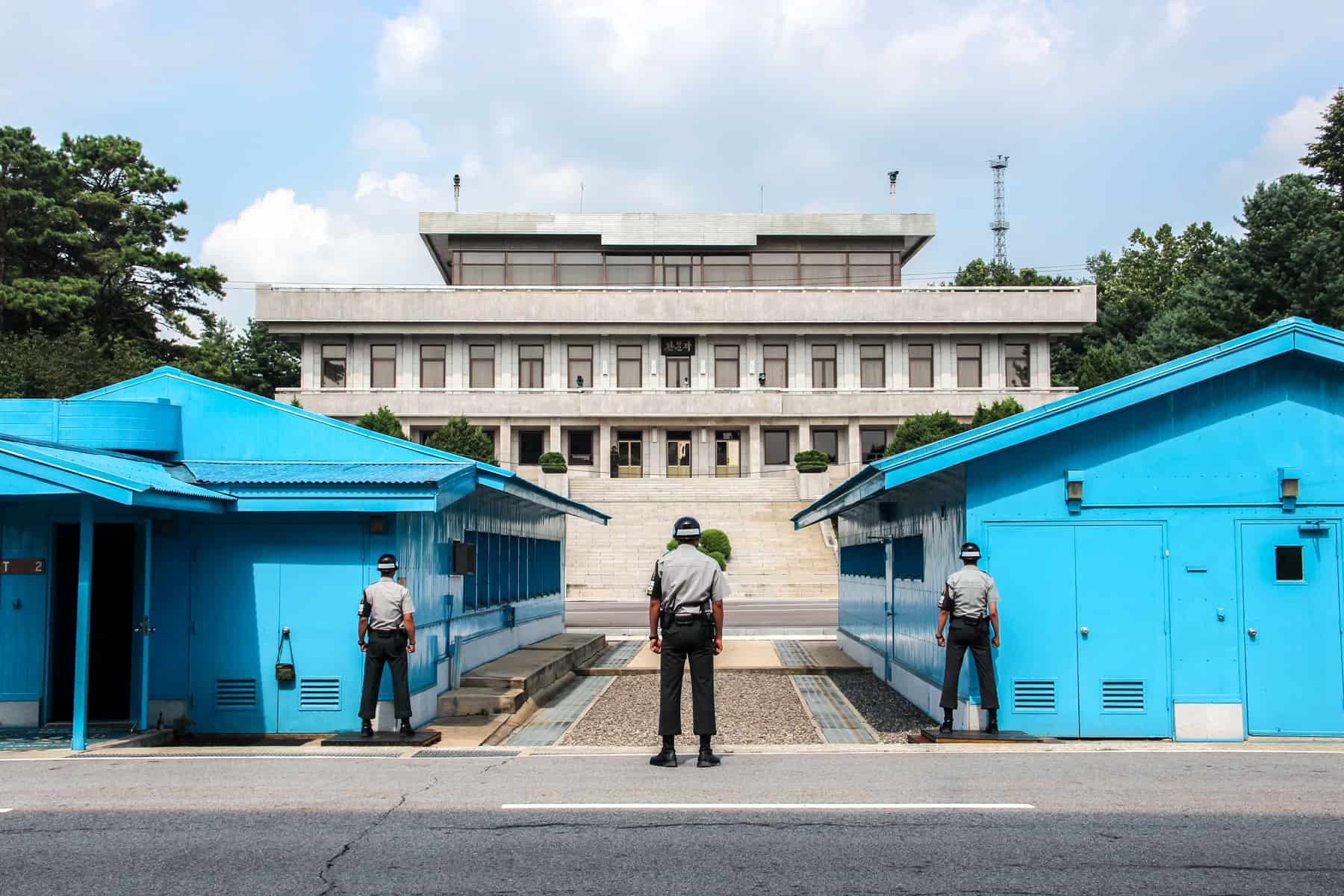
The sites you see on this tour include:
The DMZ in North Korea (DPRK)
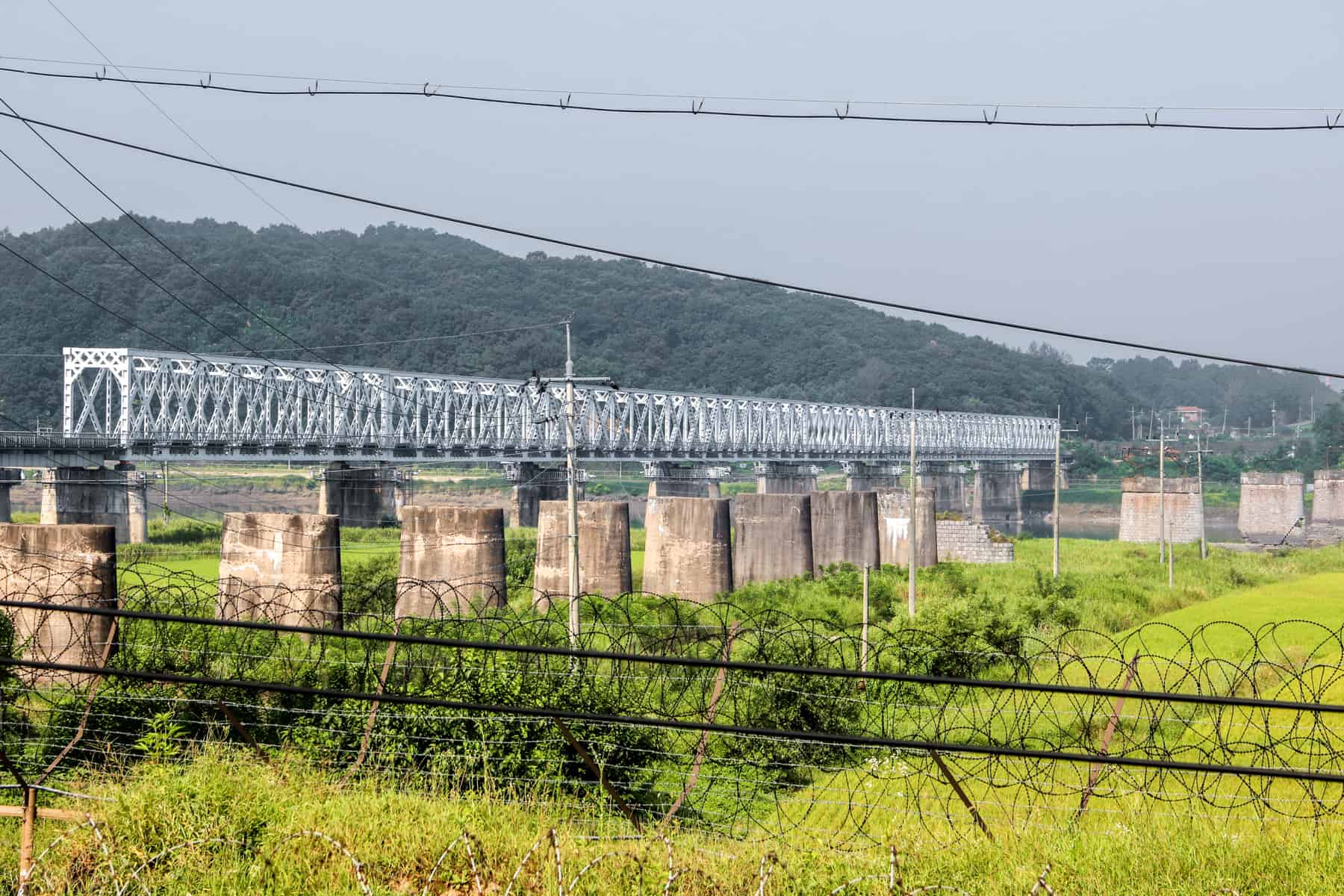
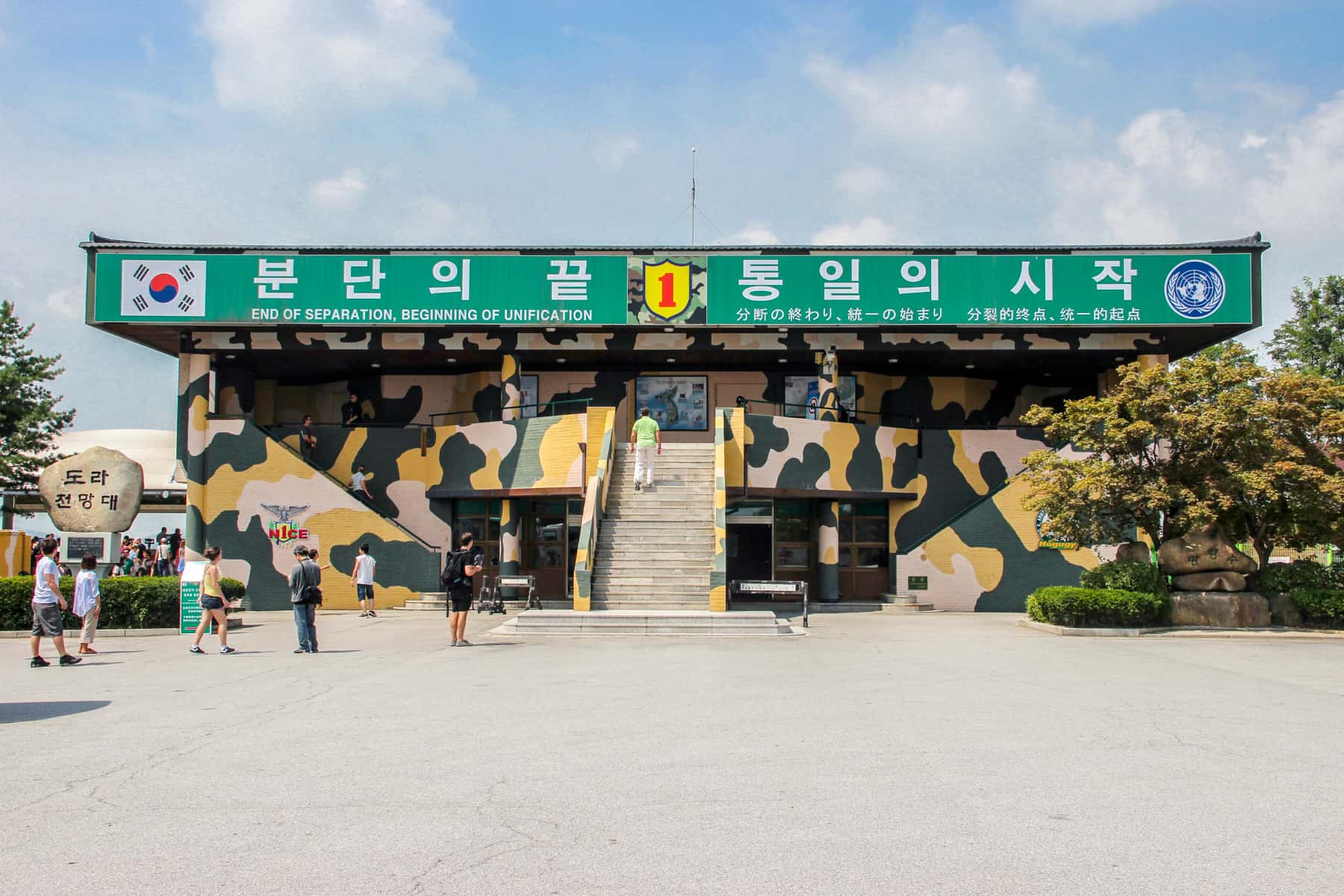
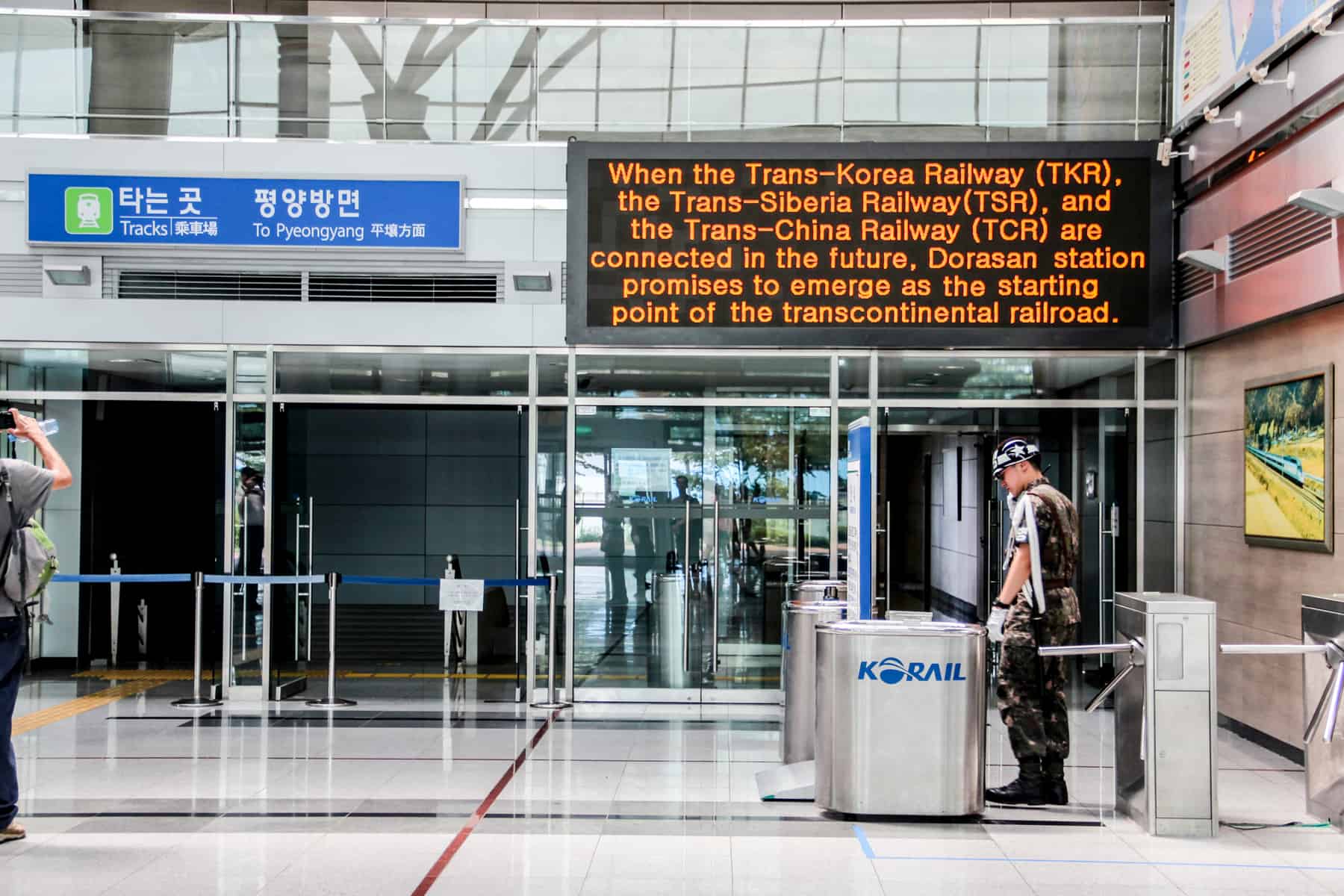
A visit to the main site, the JSA at Panmunjom.
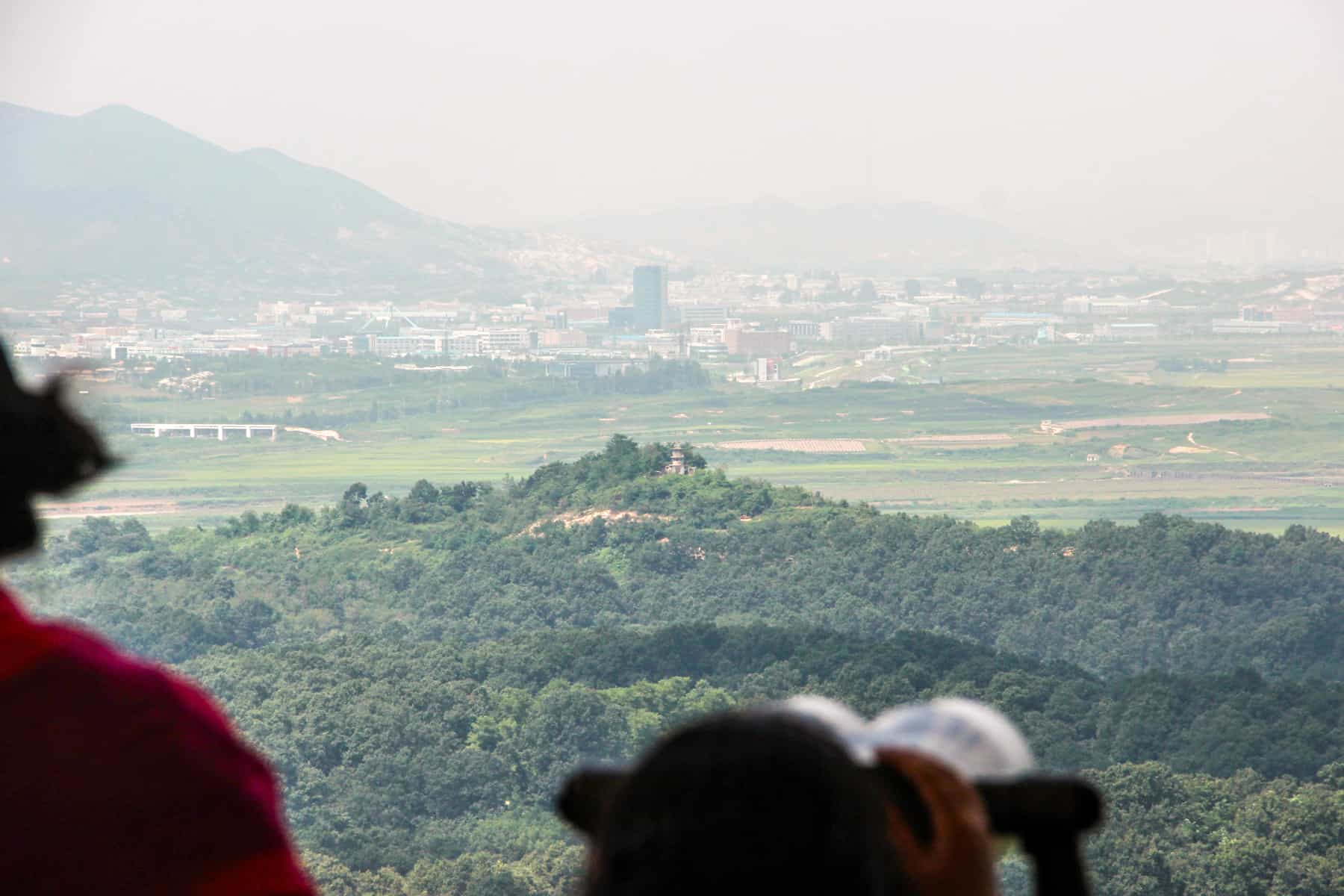
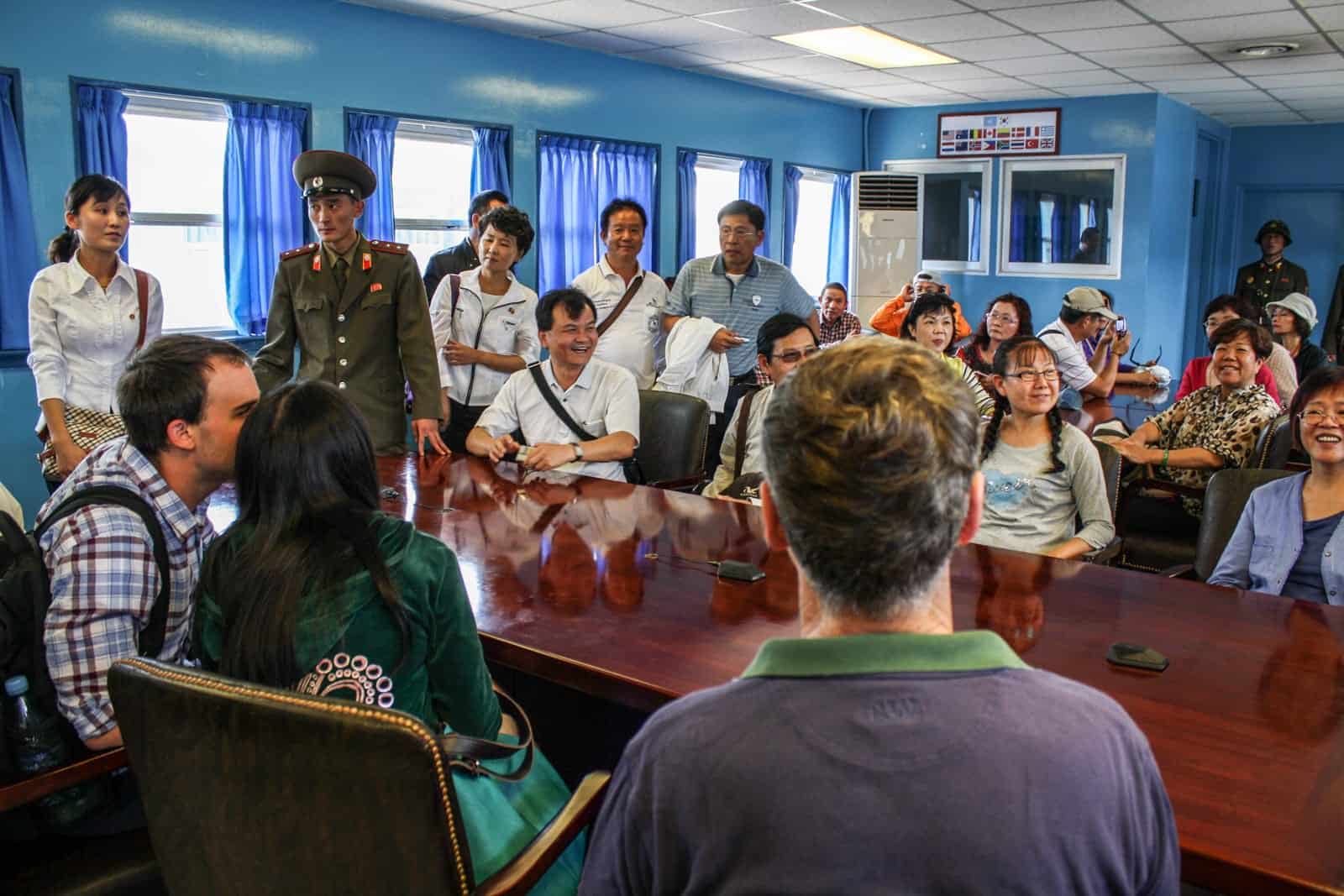
For many of the tourists at the DMZ, I don’t think they really understood exactly where they were. At times, it felt like a day trip to Disneyland. This is at no fault of the tour company, who facilitate your transport between each of the sites and who provide knowledgeable background and historical insights on the coach along the way, but the fault of who is behind the tourism surrounding this particular area. It could be the government, or whoever thought it was acceptable to build a fairground next to the area where the bridge is. Or those who thought it was acceptable to turn the Observation Deck into a zoo-like atmosphere, surrounded by the screams of people looking through telescopes exclaiming, “Oh.My.God. I just saw an actual North Korean.” Yes, this really happened.
The DMZ Military Demarcation Line at Panmunjom, Korea
For me, it’s how I wanted to see it and understand it – from the TWO viewing points in Panmunjom. I stood on the North Korean side in November 2012, and in South Korea a year later.
It was time to get on the coach and drive the short way to the JSA, driving through a long road lined with large square boulders that would fall and block the road should any sign of attack be imminent (the same tactic exists on the South Korean side).
The Dora Observatory where you can look out over North Korea. The most prominent lookout point is to the North Korean ‘Propaganda Village’.
READ MORE: Travel to North Korea – Where Preconceptions and Reality Collide
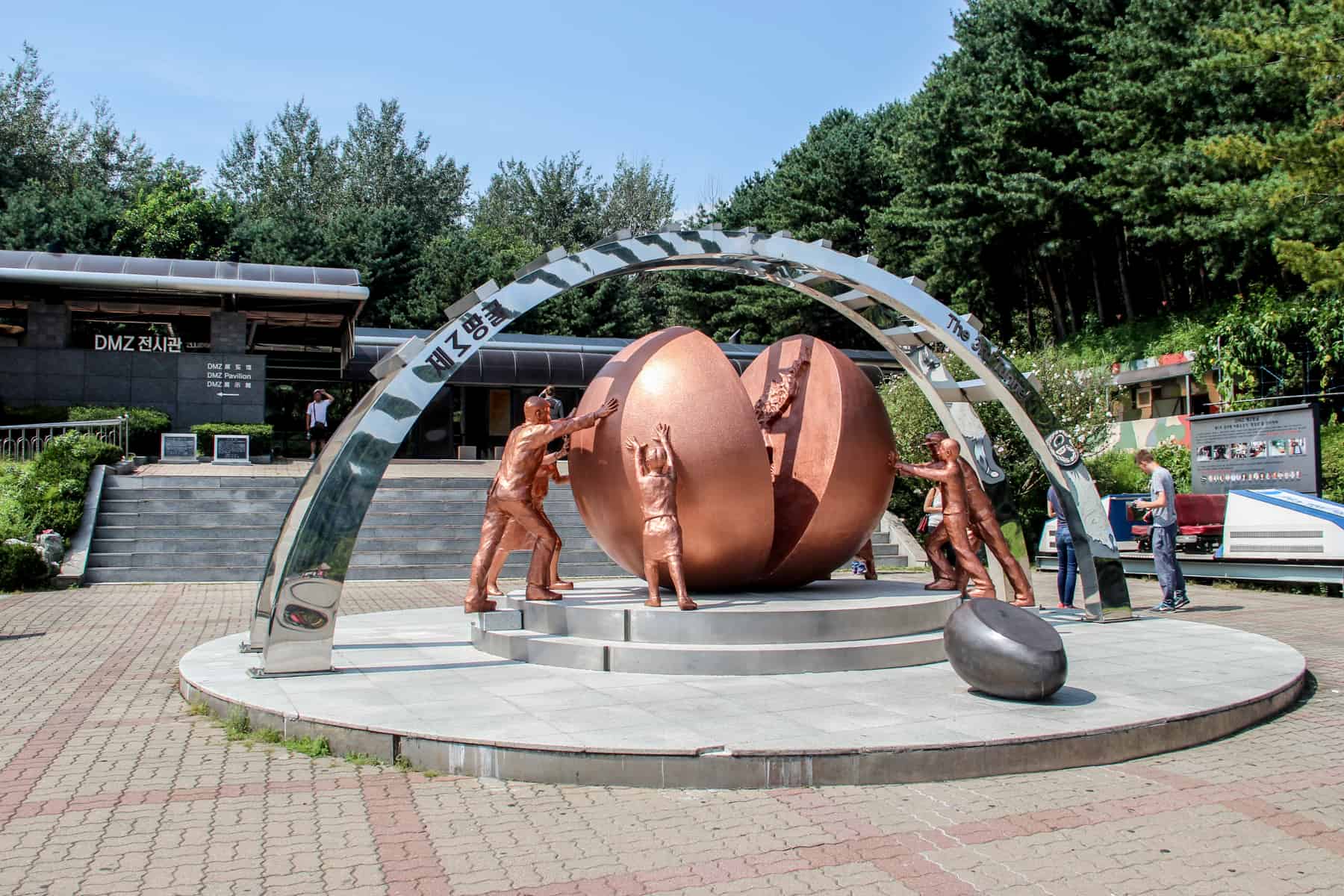
South Korean Guards at the DMZ facing the North Korean side
The DMZ in South Korea (Republic)
A visit to the DMZ is without a doubt an eye-opener and a must-see for those interested in history and current affairs. While a visit to North Korea is undoubtedly going to be fuelled by a more serious attitude, where you have to be guarded and ‘on your best behaviour’ at all times, I sadly think people miss the point when visiting on the South Korean side. A few people around me expressed disappointment with the way things were handled.
Time in the JSA conference room is more strict. Back in the blue building (the Military Armistice Commission Conference Room), we were once again told about the DMZ and the guard line, except we were not allowed to sit at the table, only stand around it. South Korean guards stood in their fierce Taekwondo stance – something of which they are famous for – yet tourists giggled and replicated the pose for photos.
To visit the DMZ from North Korea is tense and from South Korea it’s whimsical. What is it like to tour the DMZ and JSA and witness the world’s most heavily armed border?
When you travel to the Korean DMZ on a tour, you will visit the JSA. Here, you enter the Military Armistice Commission Conference Room – the only place where anyone can freely ‘cross’ the Demarcation Line.
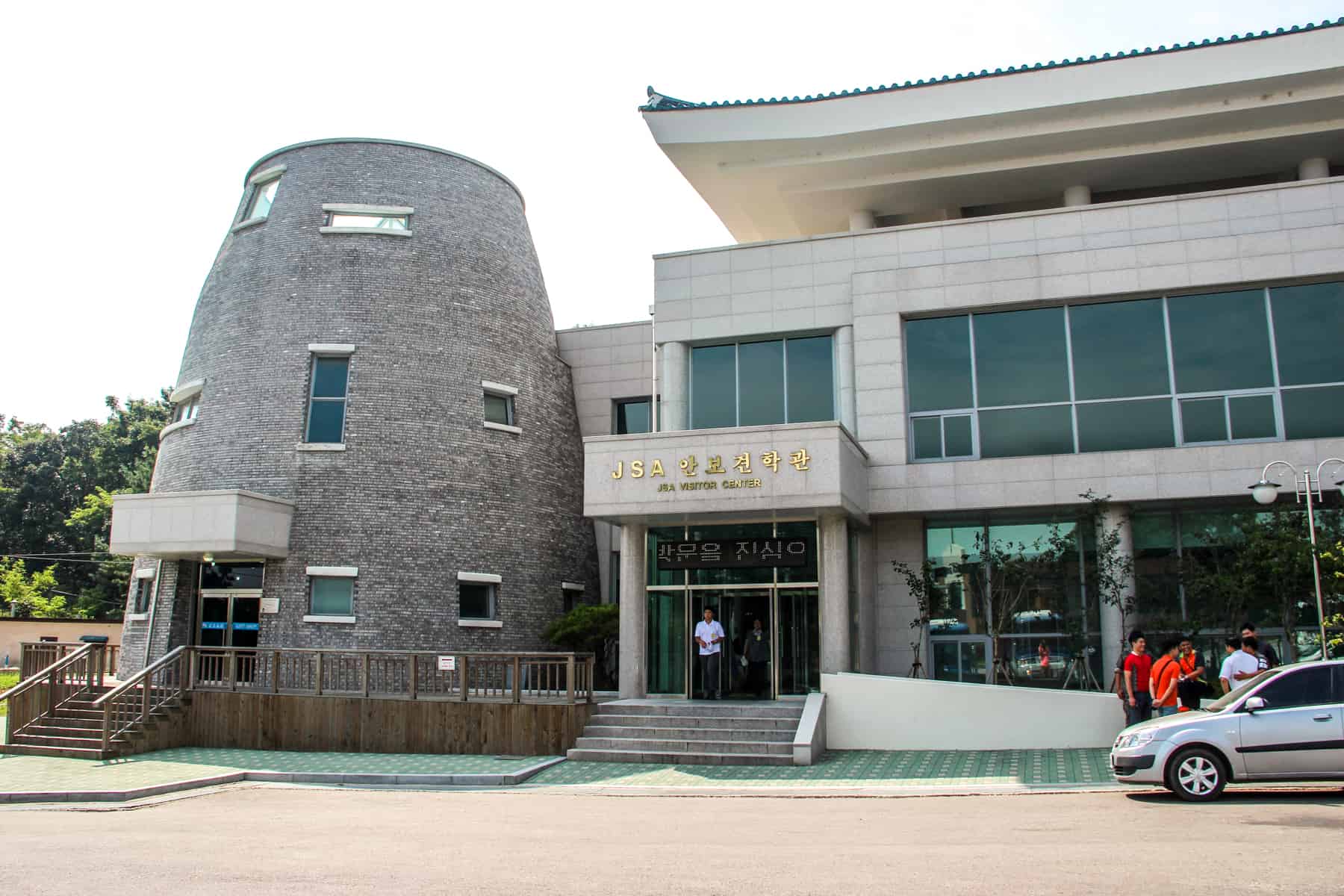
That was something we would never have dreamt of doing on the North Korean side.
After 10 minutes or so, we were then taken into the blue hut – the Military Armistice Commission Conference Room that straddles the Demarcation Line. We were allowed to sit at the table (the ‘line’ cutting through the middle of the table) and, watched over by our guide, we all sat on either side of the table shaking hands across it, marking the peace we all wish for.
Our North Korean military guide was an approachable man, and not half as scary as I imagined him to be. He spoke the North Korean version of events, yet it wasn’t as propaganda heavy as other situations we had found ourselves in. It felt far more serious here, being so close to the ‘opposition’.
Within the neutral Panmunjom is the Joint Security Area (JSA). This is where negotiations between both sides took place and where today, democracy and communism now stand face-to-face in animosity. The Joint Security Area is the only section of the Korean DMZ where North and South Korean forces stand face-to-face.
It’s a given that the majority of visitors will visit from South Korea, and so I would personally cut out the full day tour and just stick with the specific JSA tour, yet be prepared for mixed signals regarding the seriousness of the current situation. However, for those with a deep interest in what is going on here, you will certainly take a lot more from the full-day visit of multiple sites.

I remember the first time I saw what visiting the DMZ in Korea was all about. I was 15 years old and watched Michael Palin go there on one of his travel series called Full Circle. He stood in a bland looking room, spoke of the history of the Korean War, told us how he had to basically sign his life away on a piece of paper. He then crossed an area of the room where there was a line marking on the floor. “Here I’m in North Korea,” he said, before moving his feet just a few inches and adding, “Now I’m in South Korea.”
I visited the DMZ on the North Korean side during my trip to the country with Koryo Tours. The JSA tour formed one afternoon as part of a seven-day trip to the country.
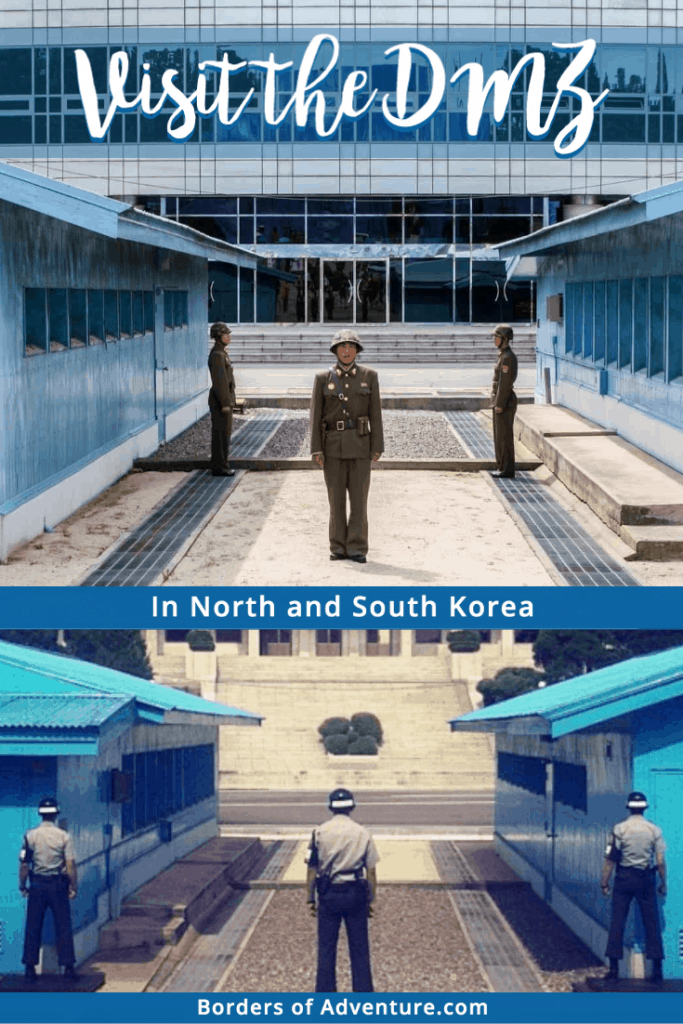
To say we were on our guard here, despite being in the safety of a group, is an understatement. It took us around three hours to reach Panmunjom from the Capital of Pyongyang, where we all waited at a busy check-in area (complete with souvenir shops) as we watched our North Korean guides have their passports swiped firmly out of their hands.
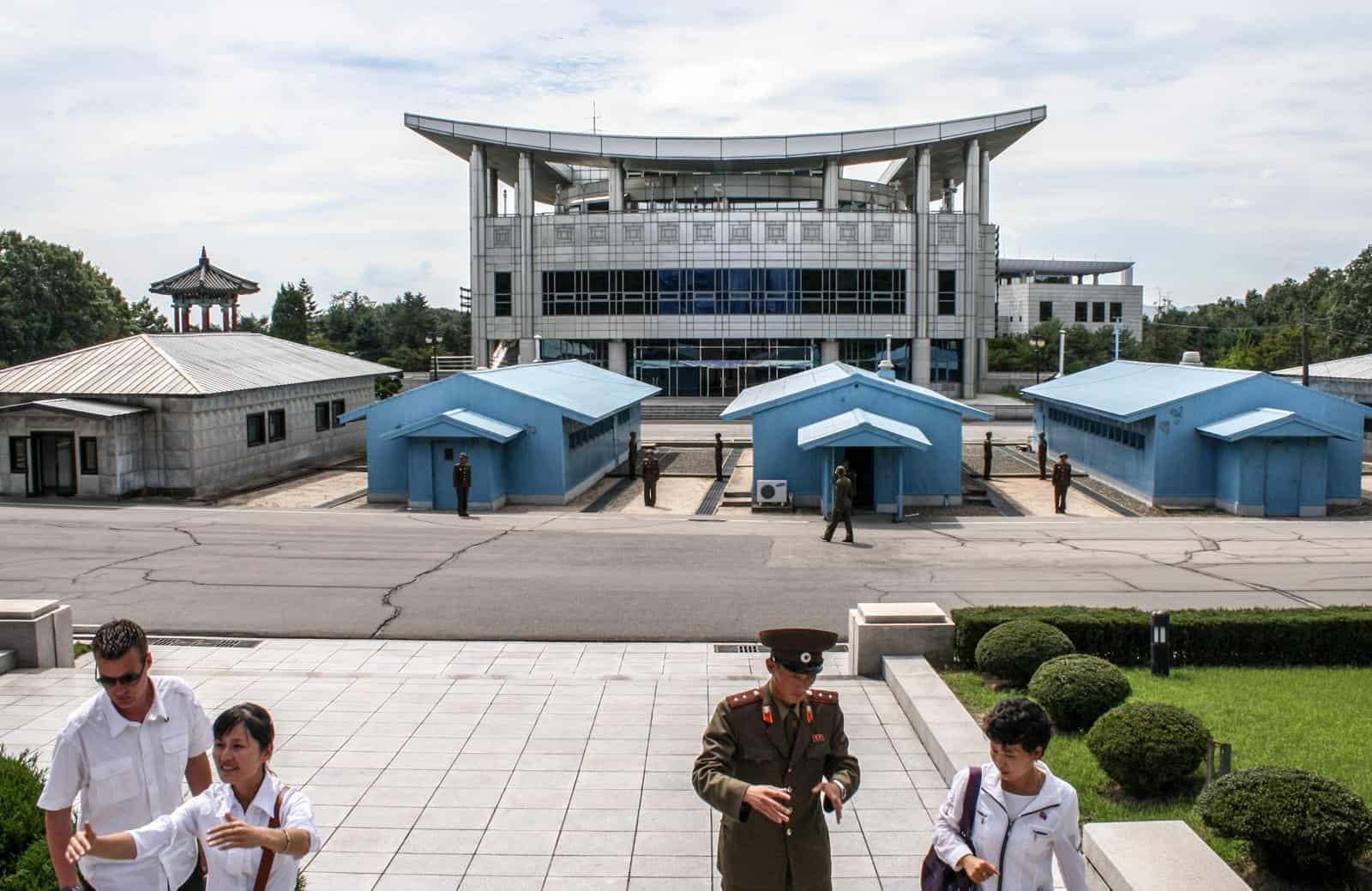
North Korean Guards at the DMZ DPRK Side
Running through the middle of the 4km belt of ‘No Man’s Land’ is the Military Demarcation Line (the ‘actual’ border) and here sits Panmunjom – the “truce village”.
The Reality When You Tour the DMZ
North Korean guards were present; they lurked in the shadows and behind the pillars on the beige building I had once stood at months before. We were informed of some rules to follow – we were not to take pictures of any North Korean guards that may appear in the building in the background, and not to make any faces or hand gestures which they can film and use as propaganda, or as a means of retaliation. Whilst I felt safe, the viewing point time felt unnerving, especially being around US soldiers who had a frivolous, laddish, macho attitude, and were themselves making gestures.
However, despite the viewing lines being only meters away from each other and the room you enter is the same one, they were both very different experiences.
In South Korea, my visit to the DMZ was a day tour with VIP Travel, considered to be the best DMZ/JSR tour agency in Seoul.
Only when we are gone, do they stand literally face-to-face with one another.
Bookings need to be made at least 48 hours before the chosen day of the tour.
Never once did I feel the DMZ visit in South Korea was a serious issue or treated as a serious place. The US soldier, our guide, was young, knowledgeable and delivered a fantastic presentation that was factual and historically sound. Yet, for the most part, it’s treated as a bit of fun peering into the hermit kingdom. While people on the ground cannot change the ignorance and stupidity of some of the tourists who visit, there could be more educational markers put in place and the enforcement of more rules to encourage a little respect.
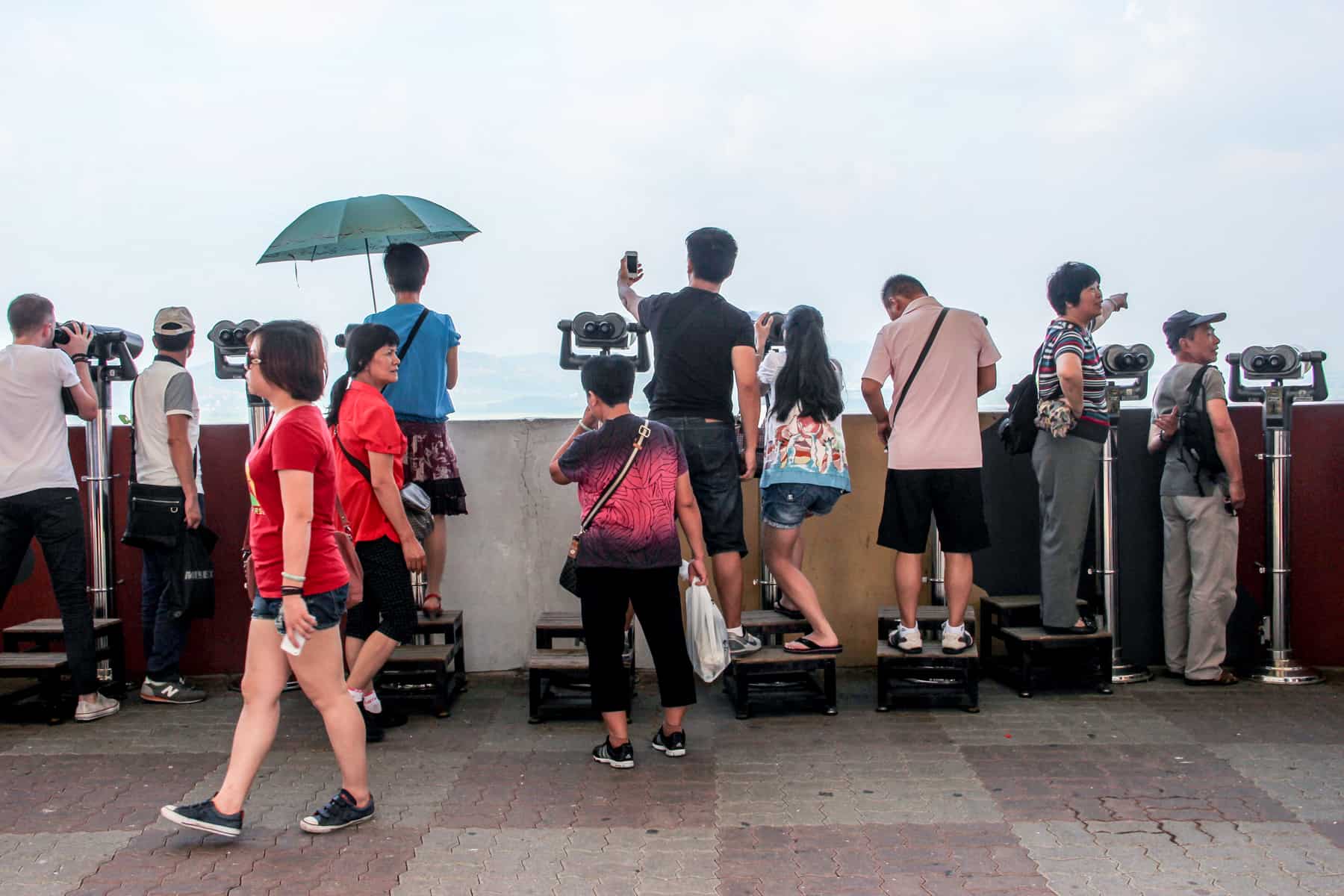
Visit the DMZ in North Korea and South Korea – The Story From Both Sides
Should a Visiting the DMZ be on Your Korea Itinerary?
The ‘Friendship Bridge’, a train station that links both countries via a single line, but whose full service is obviously not in use. However, some tours do allow you the opportunity to take a short journey on part of it, on the DMZ Peace Train from Imjingak to Dorosan Station, which you also visit.

There wasn’t the grand face-off we all hear about in the media. I guess this is toned down during visits, with designated times given to both sides for tourist arrivals.
Book a DMZ Tour
DMZ Tour North Korea
It was then I felt that ‘reunification’ was nothing more than a throwaway term, later confounded by many South Koreans I met who said: “Many of us are not bothered by it”.
DMZ Tour South Korea
I have seen the DMZ from both sides of Korea.
The 3rd Tunnel (Third Infiltration Tunnel) – a 1,632m tunnel dug by the North Koreans, from which they could pass through into Seoul within an hour and invade, alongside tourism documentation and video centres.
The DMZ is a four-kilometre wide belt stretching 250 km, cutting the Korean peninsula almost in half at the 38th parallel, and was put in place in 1953 as a ceasefire to the Korean War.
As a tourist site, there are a few aspects of the DMZ tours that conflict with the seriousness of the situation.
Planning to Visit the DMZ in Korea? Pin It!
It felt tense, yet we were calmed upon arrival by the opportunity to look through historical artefacts, documents, and historical boards in a building designated as a North Korea museum – propaganda and all. It was, in fact, where the Korean Armistice Agreement was signed.
